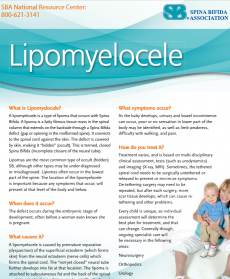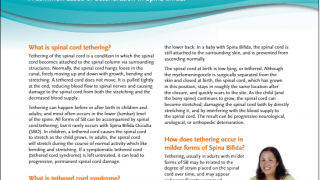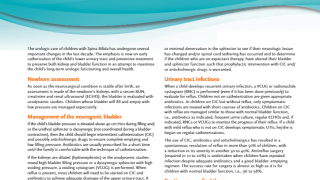Lipomyelocele is one of the most common closed spinal dysraphism. It is seen in the thoracolumbar region and usually presents as a fatty subcutaneous mass.
What is Lipomyelocele?
A lipomyelocele is a type of lipoma that occurs with Spina Bifida. A lipoma is a fatty, fibrous tissue mass in the spinal column that extends on the backside through a Spina Bifida defect (gap or opening in the spine). It connects to the spinal cord against the skin. The defect is covered by skin, making it “hidden” (occult). This is termed, closed Spina Bifida (incomplete closure of the neural tube). Lipomas are the most common type of occult (hidden) SB, although other types may be under-diagnosed or misdiagnosed. Lipomas often occur in the lowest part of the spine. The location of the lipomyelocele is important because symptoms that occur will present at that level of the body and below.
When does it occur?
It occurs during the embryonic stage of development, often before a woman even knows she is pregnant.
What causes it?
A lipomyelocele is caused by premature separation (disjunction) of the superficial ectoderm (which forms skin) from the neural ectoderm (nerve cells) which forms the spinal cord. The “not-yet closed” neural tube further develops into fat at that location. The lipoma is attached to subcutaneous fat and the back of the spinal cord; thereby “tethering” the spinal cord. The tethered cord can be symptomatic over time.
What symptoms occur?
As the baby develops, urinary and bowel incontinence can occur, poor or no sensation in the lower part of the body may be identified, as well as limb weakness, difficulty with walking, and pain.
How is it treated?
Treatment varies and is based on multi-disciplinary clinical assessment, tests (such as urodynamics) and imaging (X-ray, MRI). Sometimes, the tethered spinal cord needs to be surgically untethered or released to prevent or minimize symptoms. De-tethering surgery may need to be repeated, but after each surgery, more scar tissue develops, which can cause re-tethering and other problems. Every child is unique so that individual assessment will determine the best plan for treatment, and that can change. Generally, though, ongoing specialist care will be necessary in the following areas:
Neurosurgery
Orthopedics
Urology
Gastroenterology
This information does not constitute medical advice for any individual. As specific cases may vary from the general information presented here, SBA advises readers to consult a qualified medical or other professionals on an individual basis.
Tags


